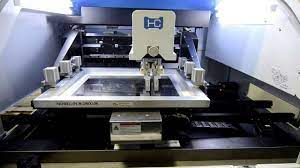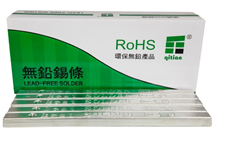SMT Reflow Oven: What You Need to Know
SMT reflow oven is an industrial convection machine that manufacturers use for solder surface mount. This long oven has multiple segments with regulated temperatures as per the specific thermal requirement of different assemblies.
Before getting further into the SMT reflow oven, let’s have an overview of the technology that works behind the SMT reflow oven called “soldering.”

What is Soldering?
Soldering is a method used to join two or more items together by melting and filling Solder into the joints. Moreover, the soldering procedure does not embroil in melting the workpieces. Soldering is used in electronics, plumbing, and metalwork in musical instruments and jewelry.
Types of Solders:
Below are the three basic types of Solder.
 |
Confiscate oxidation. Prevent air flow. Prevents auxiliary oxidation.
|
|
|
Used widely in electronic apparatus i.e., circuit boards. Removes Pb from the electronic manufacturing process.
|
|
|
Solder Flux
Used to clean and discard any impurities and oxide on PCB.
There are 3 types of solder flux: 1. Rosin Flux. 2. Organic Acid Flux. 3. Inorganic Acid Flux. |
How does Solder make Surface Mount Technology (SMT) Easy?
Manufacturers commonly use SMT for the making of the printed circuit boards or electronic circuits. Using SMT, the components are placed directly on the PCB to make them stay strong. Moreover, solid adhesives like SMT Solder paste are required to make the process low maintenance.
Since solder pastes are an imperative element of the SMT assemblage process, therefore, the solder paste is liquefied before placement, and the components can be placed by using a machine or by hand. The selection of the type of solder paste depends upon the usage and requirement of the project assembling.
Further, the solder pastes are available in solder wire, bars, preforms, and spheres. The buyer can select according to the compatibility of the project with solder alloy.
How Does an SMT Reflow Oven Work?

Figure 1 How Does an SMT Reflow Oven Work
Manufacturers combine conduction, radiation, and convection to make the reflow oven work. A ceramic heat element with infrared radiation emits heat. However, the heat is not directly delivered to the PCB. Primarily, the heat is shifted to a heat regulator. The regulator also makes the heat output even. After this, the convection fan blows the hot air into the inner chamber. The aimed PCB will now get the heat consistency at any spot.
Purpose of Using SMT Reflow oven:
The purpose of using an SMT reflow oven is that it provides the best solder quality. Also, it processes circuit boards in a foaming gas environment, controlled nitrogen or air atmosphere. Moreover, during the heating process, the foaming gas or nitrogen is utilized to eliminate or reduce oxidation of the assembled components.
SMT VS Old Through Hole Technology:
As compared to the old through technology, SMT:
- Gives quicker placement of automatic machines
- Also, provides same electrical functioning in relatively smaller size (physical),
- Cost effective in terms of raw material rate,
- In addition, it has lesser scrounging effects.
Advantages and Disadvantages of Surface Mount Technology (SMT):
The advantages and disadvantaged of Surface mount technology are mentioned in comparison to older through-hole techniques. Let’s have a look at what makes SMT a better option to opt for.
Advantages:
Following are the advantages of surface mount technology:
- Fast and simple assembling process.
- Time saving procedure.
- It can effectively mount smaller components.
- SMT gives higher component density with multiple connections per component.
- Furthermore, SMT does not block routing layers or space.
- With SMT, you can easily place the components on both sides of the circuit board.
- Less drilling of holes is required in the SMT process.
- SMT parts are cost-effective.
- Lesser initial cost.
- Smaller radiation loop area gives better EMC performance.
Disadvantages:
- Repairing SMT-treated projects are difficult and entail skilled operators.
- Also, upon making the advancements in this already ultra-fine pitch technology, the dimensions of solder joints become much smaller, making them vulnerable to break easily.
- SMT is not suitable for high voltage and large components.
Tips and Tricks to Use Surface Mount Technology (SMT):
Before getting directly into the process without knowing the tips and tricks to handle it is not wise. Here we include some tips and tricks to use SMT that will make you a pro. So let’s begin:
- Make sure the circuit board is clean before soldering.
- You can use wood alcohol and isopropanol to confiscate grease or light oils.
- Also.if required, wash the PCB with warm water.
- Do not touch copper with bare hands.
- Hold the PCB from the edge.
- Invest in the right soldering iron and tip for your project.
- If you are in the experiment stage, use low melting point solder.
- Use a magnification source and tweezer while soldering.
- Avoid sitting in a cluttered space to make the process easy.
- To solder small parts, use less amount of soldering paste.
- Make sure the joints are stable before soldering the other side of the component.
Frequently Asked Questions:
- What does SMT stand for?
SMT stands for Surface Mount Technology.
- What is Soldering?
Manufacturers use the Soldering process to join two or more items together by melting and using Solder paste as filler.
- How does an SMT reflow work?
SMT reflow oven is a combination of three technologies; radiation, convection and conduction.
- Ceramic heat element emits heat,
- It is entered in the heat regulator,
- Moreover, heat output is evened out,
- Convection fan blows hot air into the inner chamber,
- PCB gets the heat consistency at any spot.

Final Verdict:
SMT reflow oven is a piece of advanced machinery used to solder surface mount. Moreover, solder paste is an important component of the whole SMT procedure. There are certain myths about SMT among amateurs, like the expensive equipment, difficult-to-find components, and that it requires special training and assistance of professional PCBs. Whereas the truth is you don’t require a steady hand or excessive practicing.
Contact us to get the best quality Solder paste.






